Clinamen
Anthea Lubat
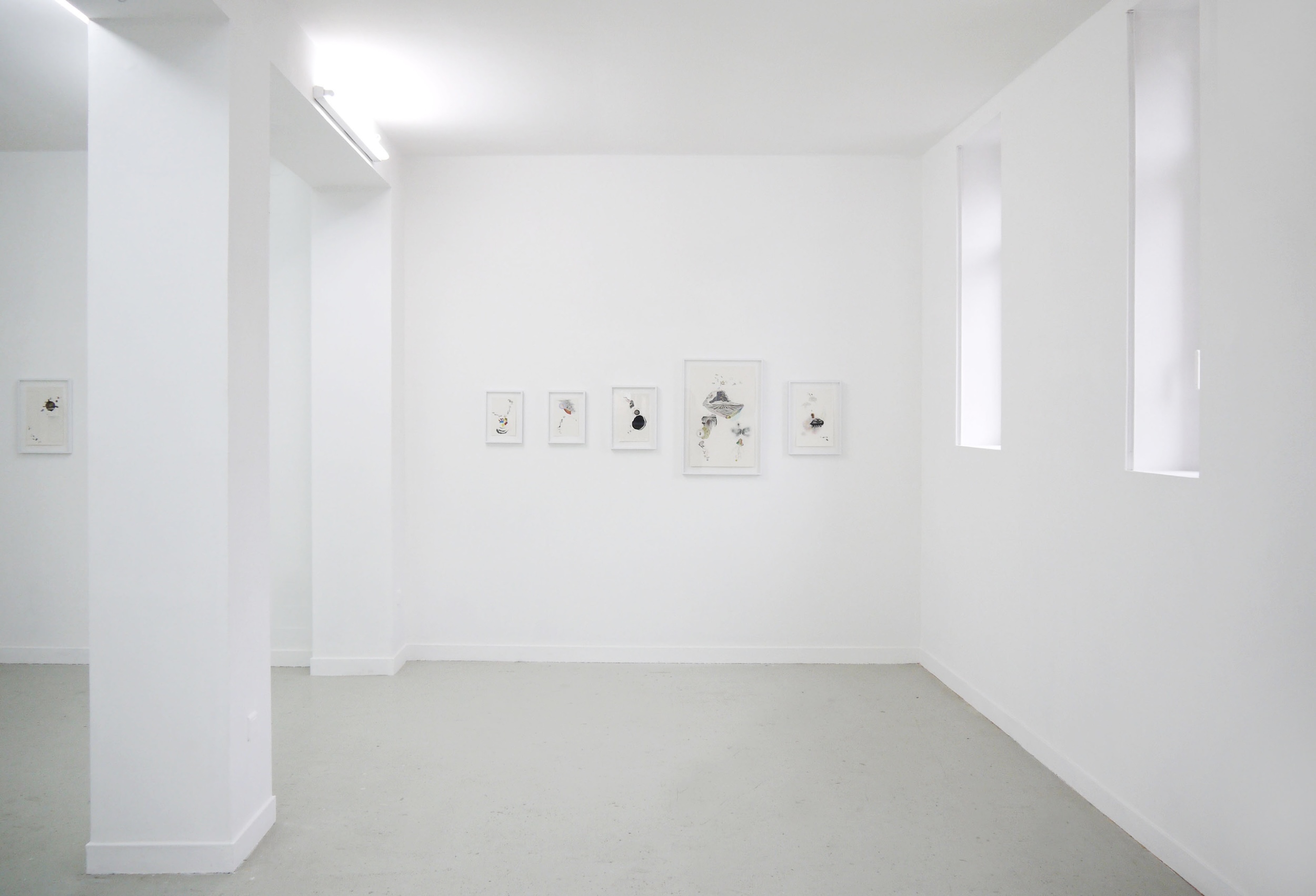
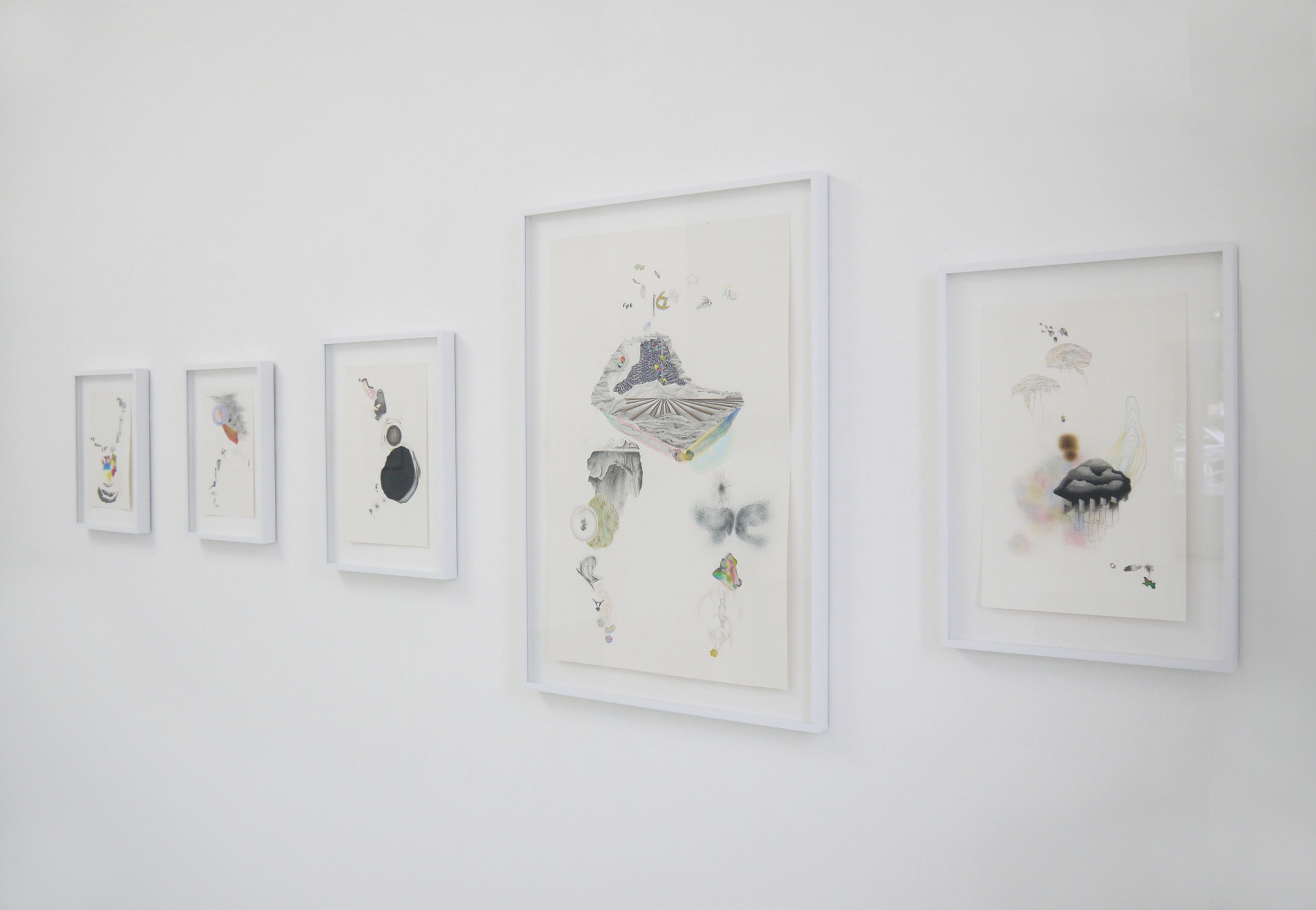
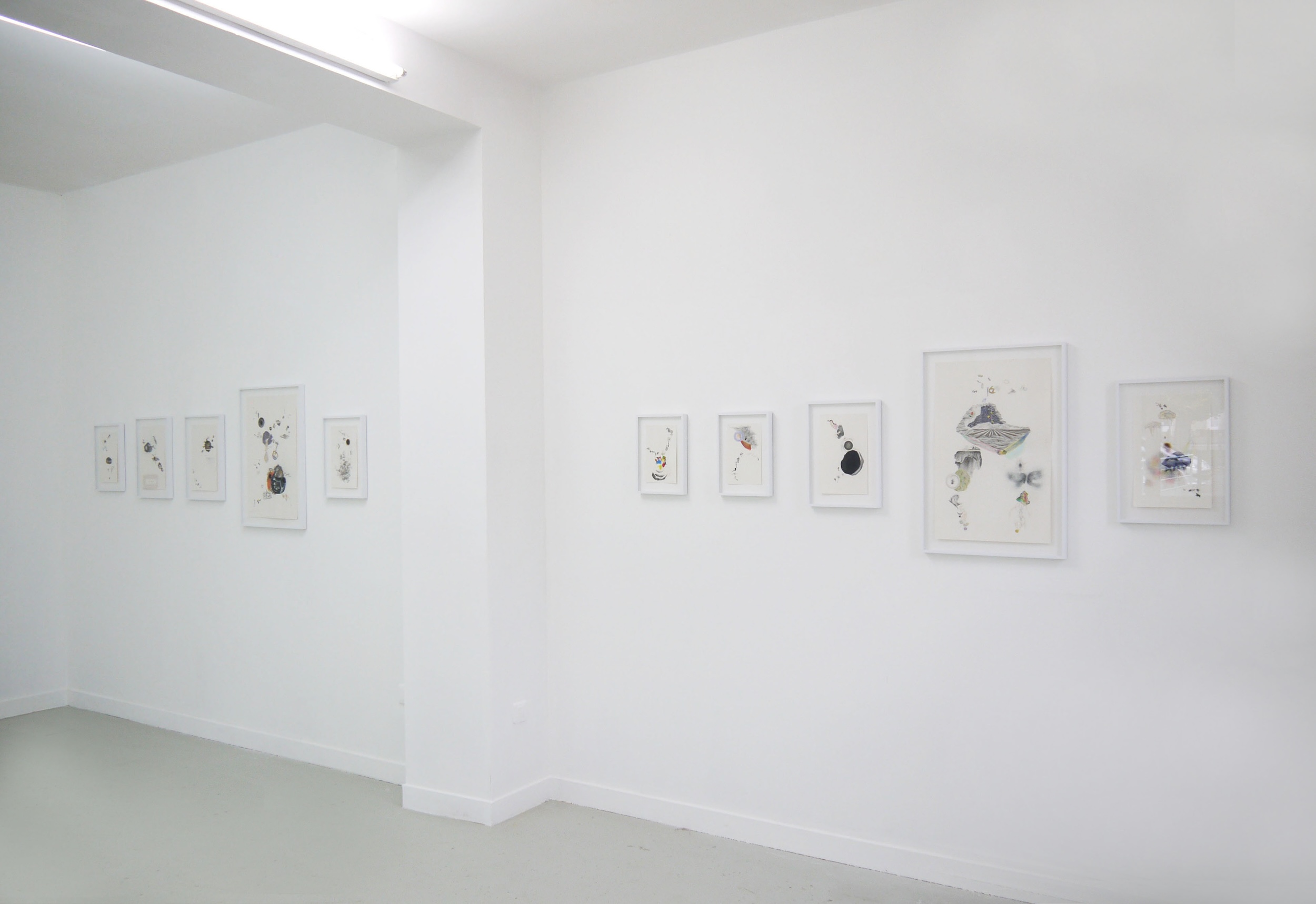
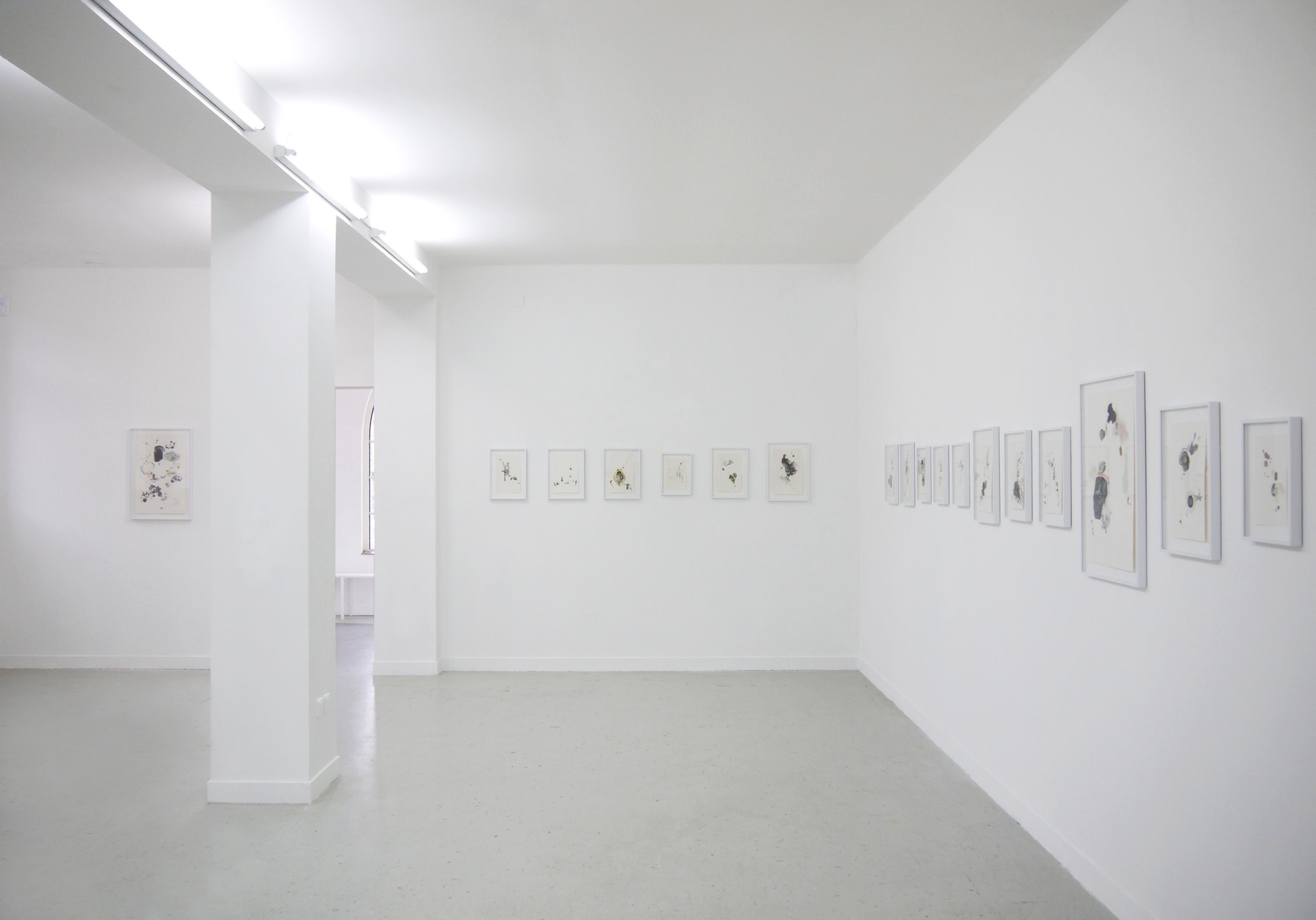
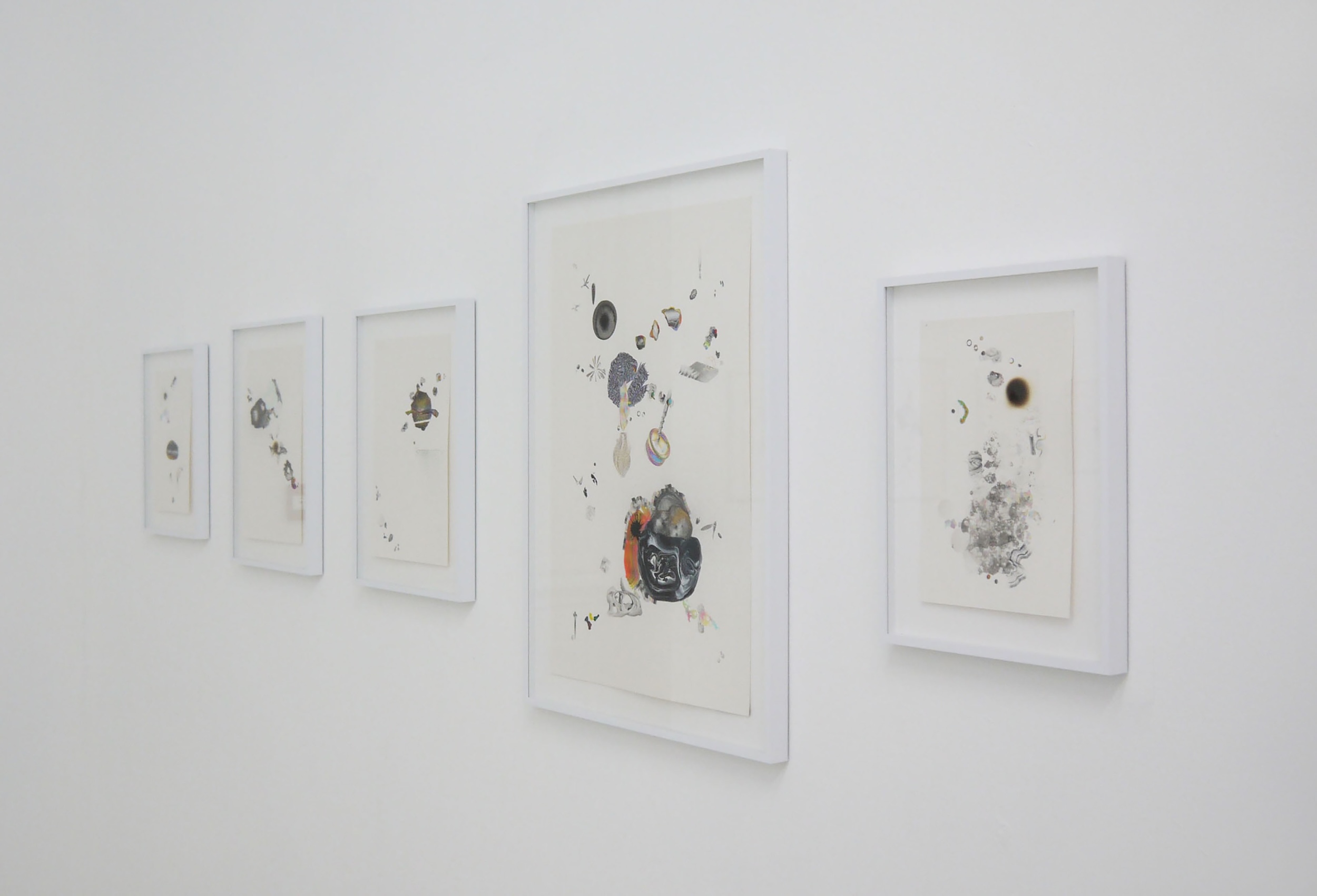
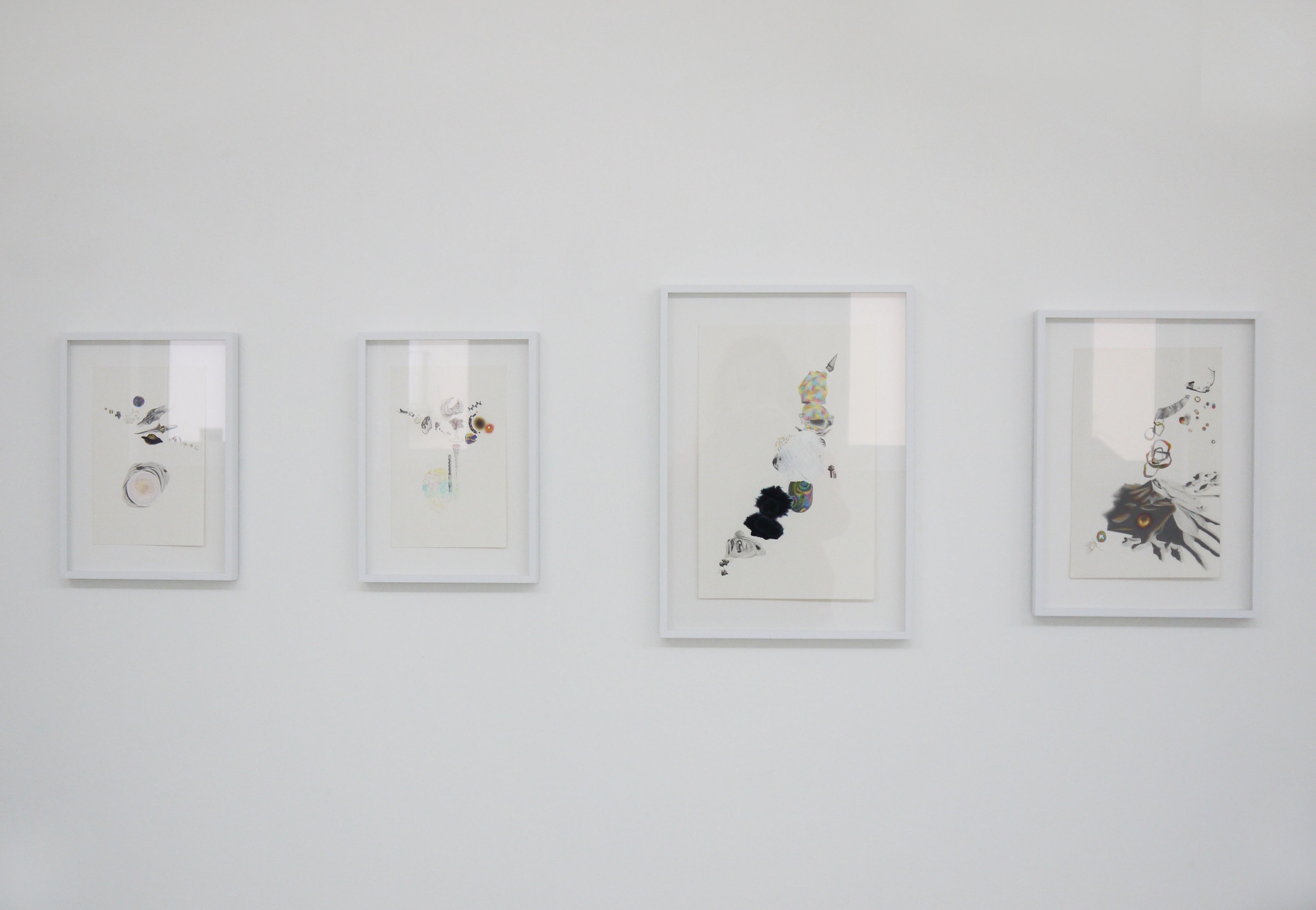
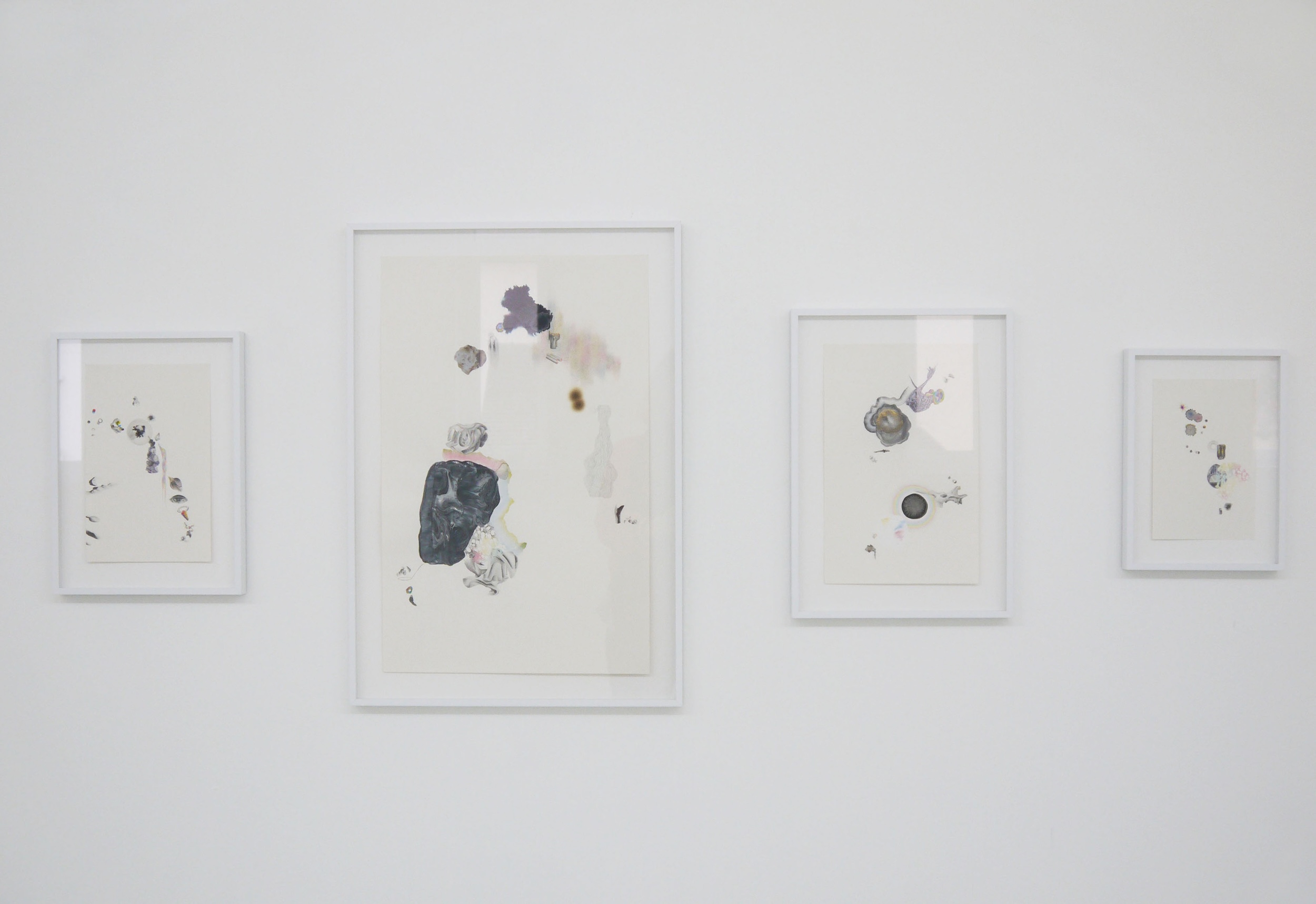
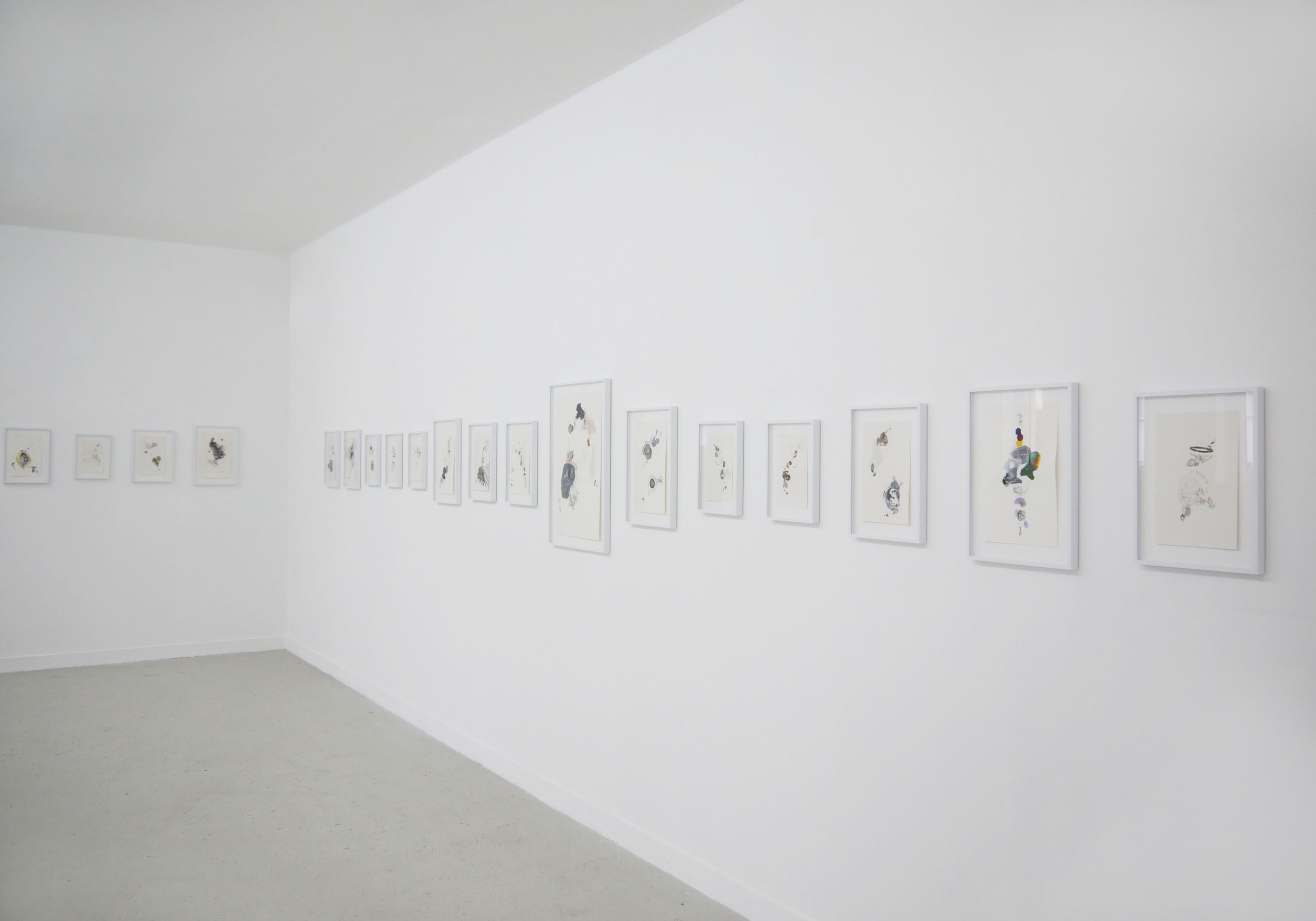
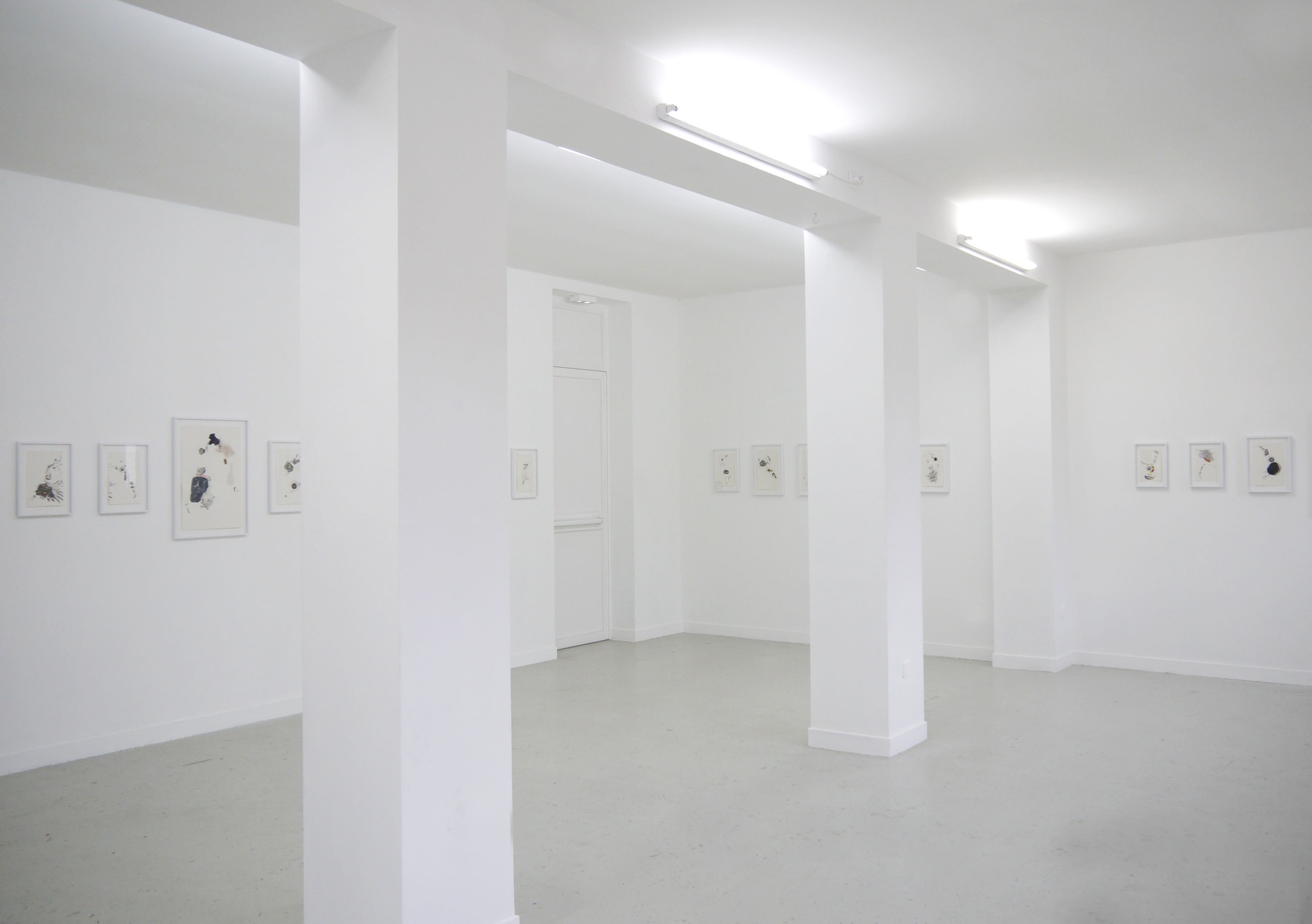
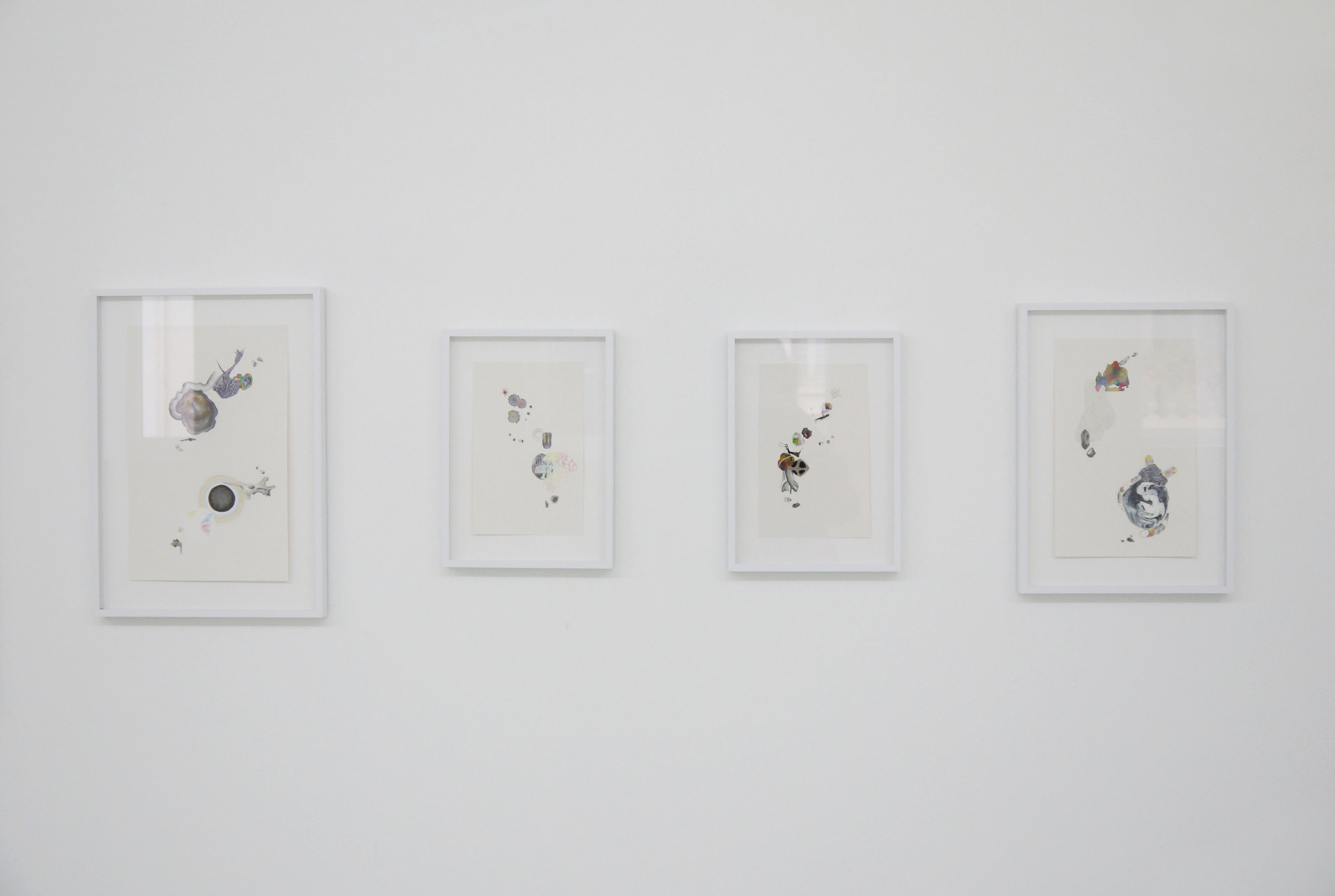
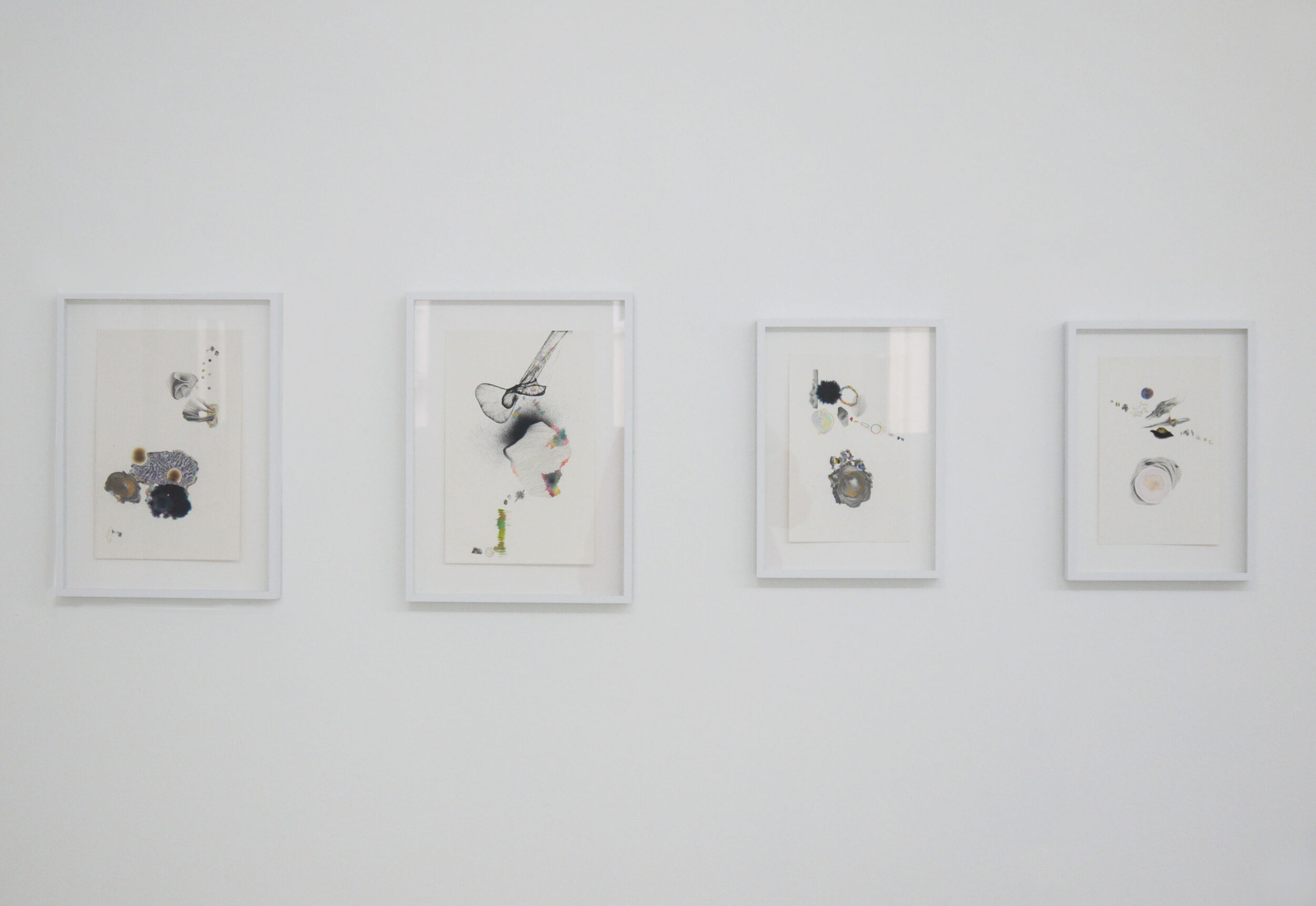
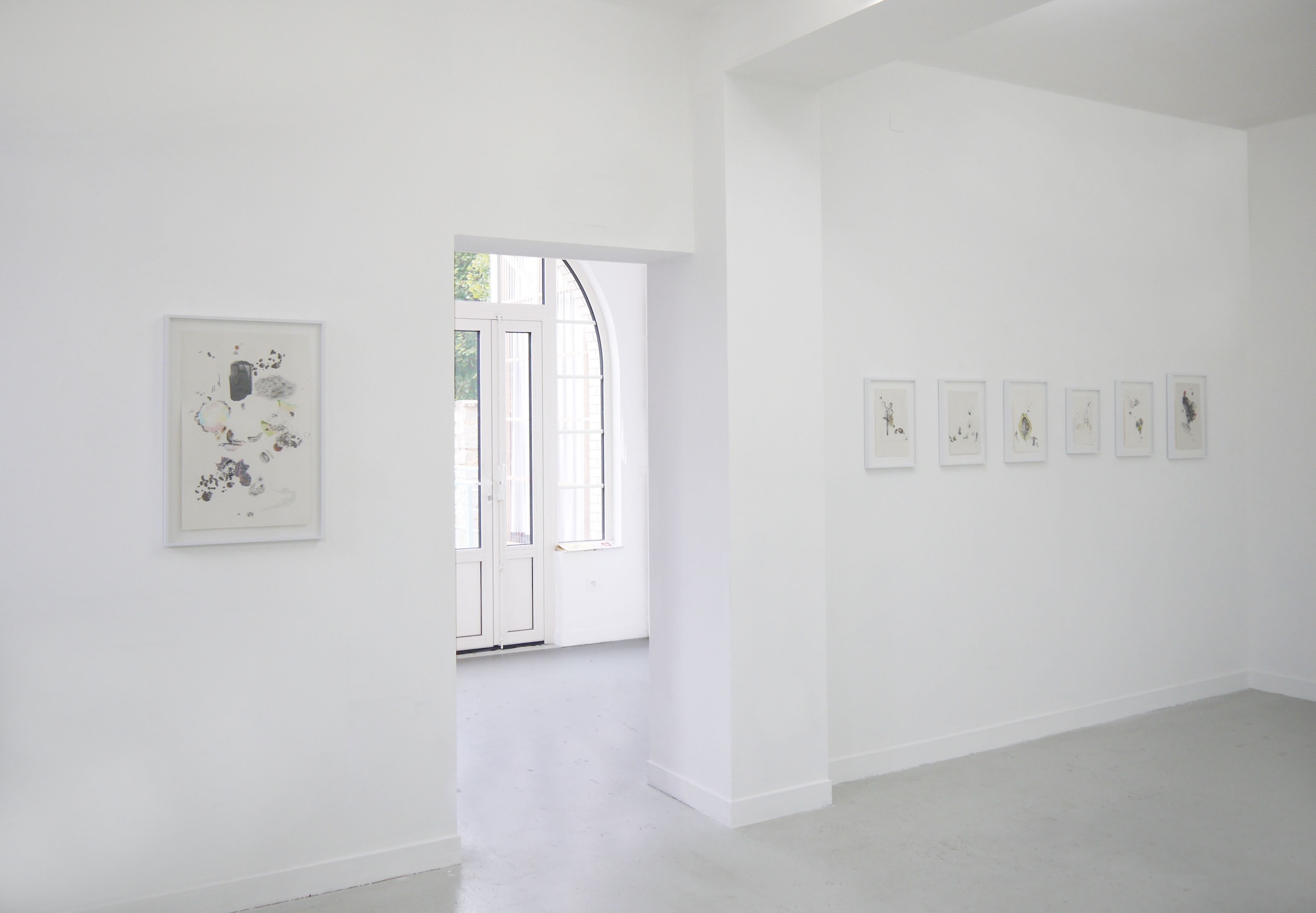
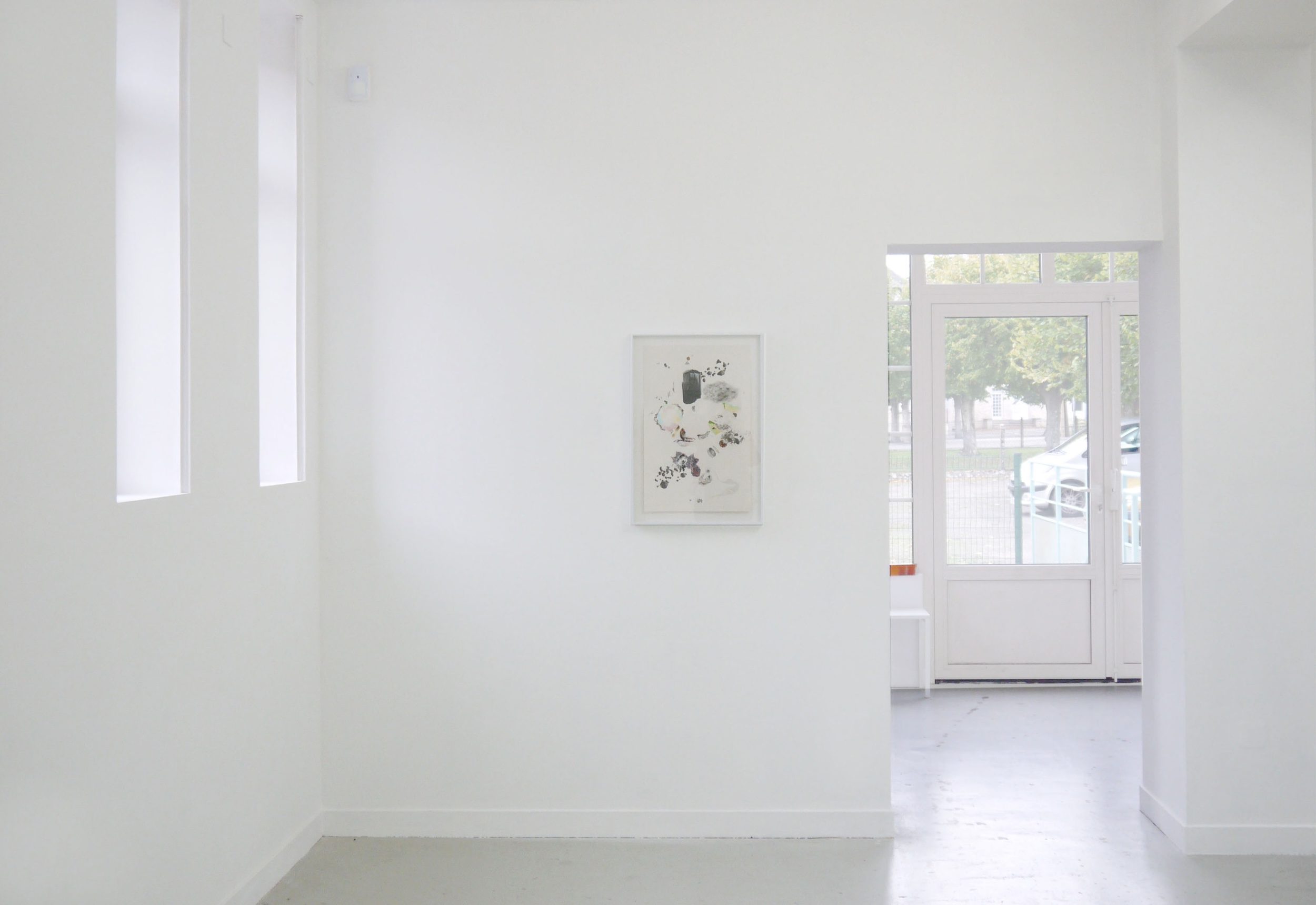
A colored ring, like a portal, opening onto an unknown beyond.
Like in a science fiction film, the doorway remains in shadow, framed by light. All around. We still don’t quite know what the dazzling glow of this open threshold announces — whether it invites us to cross it, or if it foreshadows a monster.
Like bridges between one world and another, on paper, ink can become colored pencil, and a blotch of paint can be transfigured — leaving behind only a shadow, marked in negative by the trace of fire.
These transmutations are subtle; they unfold on a minute scale, within a temporality that belongs only to them.
We are the music makers
And we are the dreamers of dreams
The white surface is a return to zero. It’s the chance to invent a new language — like when we are children, a language that only a few will recognize years later. This cryptic language carries, within each of its symbols, an unsuspected incantatory power.
We will have turned over leaves and stones, discovering the runes hidden beneath, now forming our alphabet.
Figures have sprouted on the page like lichen, clinging to the edges of our thoughts — at times porous and chalky, at times cold and sharp.
The images float in weightlessness — neither fully on your side, nor quite on mine.
Where you thought you saw a bone, a precious mineral form, or a rainbow — something familiar, something you believed to have tamed — the shape now eludes you and transforms into vapor.
The image is also everything it is not. Perhaps it finds its truest expression in the imprint it leaves on your retina — shedding its aqueous state, leaving behind its silver-salt pool, and dissolving into a white silence.
A screw fragment, diagrammed lunar phases, colorful spirals, a blown ink blot, flaking lacquer, a shard of reddish stone, a miniature grayscale landscape as if cut from a Flemish painting — all may coexist.
The paper comes alive.
They appear, at times, mirrored from one page to another — or reemerge farther away, on a different scale — as if to suggest another space-time order is possible: a visual interpretation of the butterfly effect.
Sometimes the motifs stretch across multiple sheets, swapping their positions on center stage. Recently, they’ve begun to break free from the paper, taking on three-dimensional form.
Charcoal, plaster, mortar — and their manipulation in space — offer endless possibilities: a chance to share in the emotion of the first explorers — everything remains to be invented.
Then, like a red thread running through it all, in each of these works, there is above all the pleasure of composition.
The joy of pencil and graphite, scratching and drawing: the patient gesture, weaving lace, the fabric of a new image.